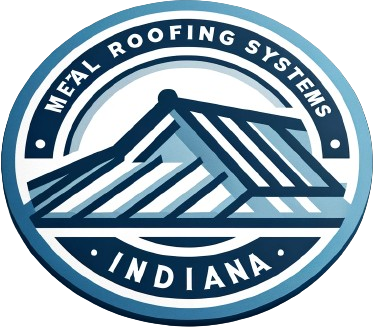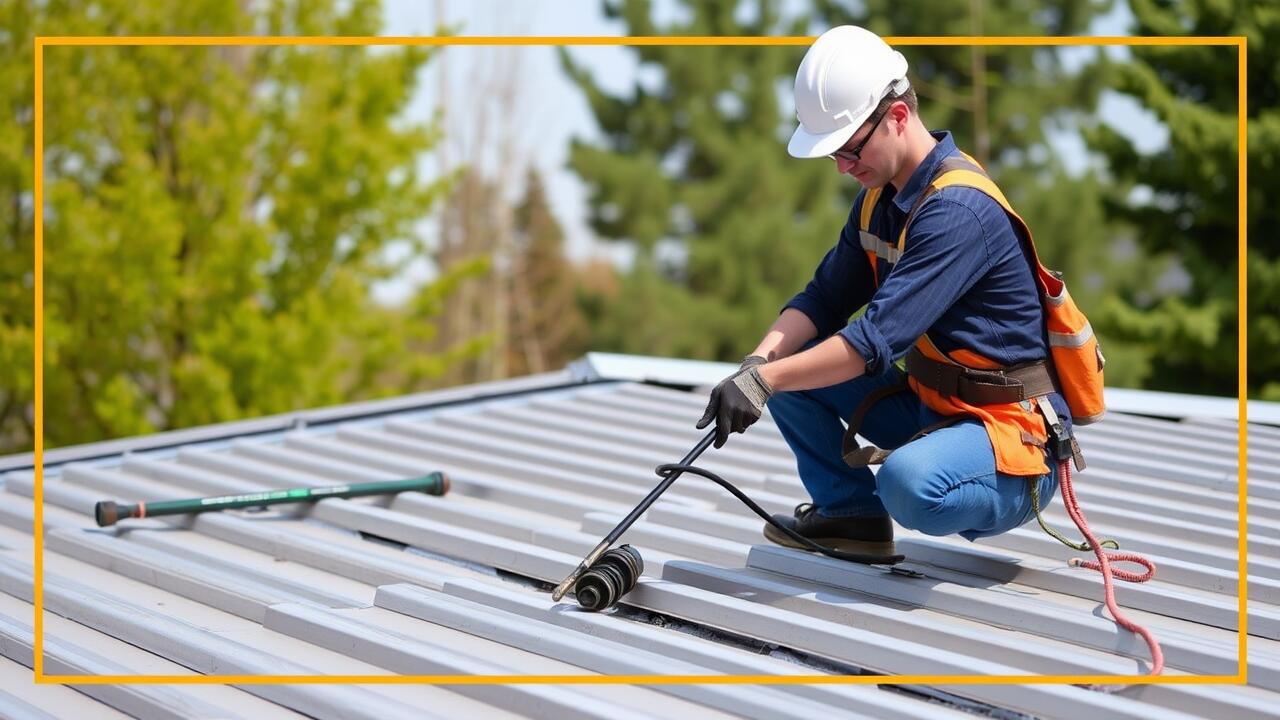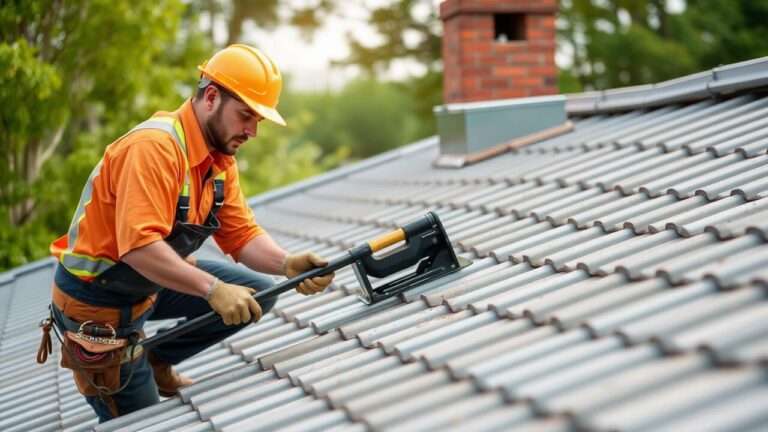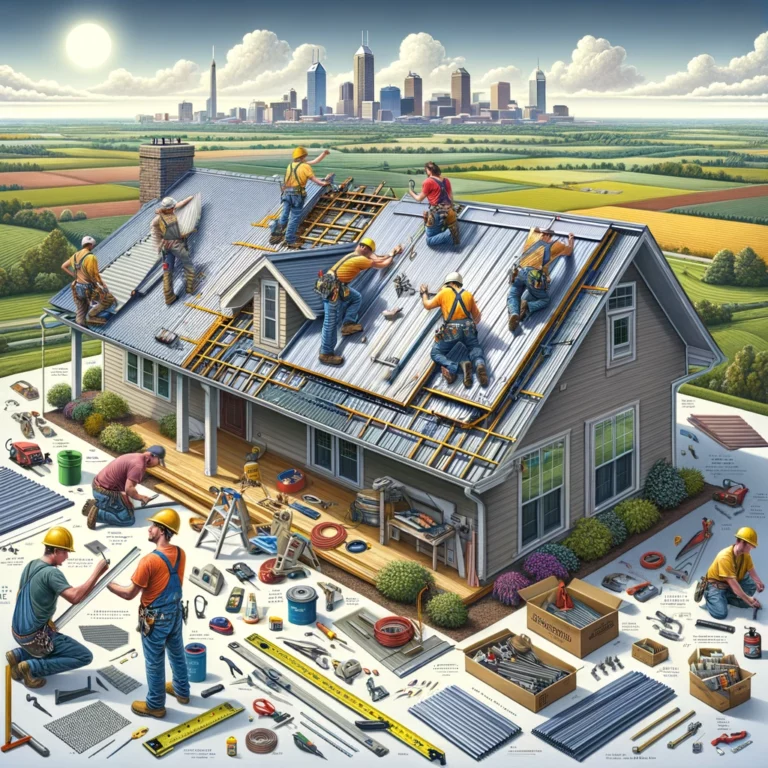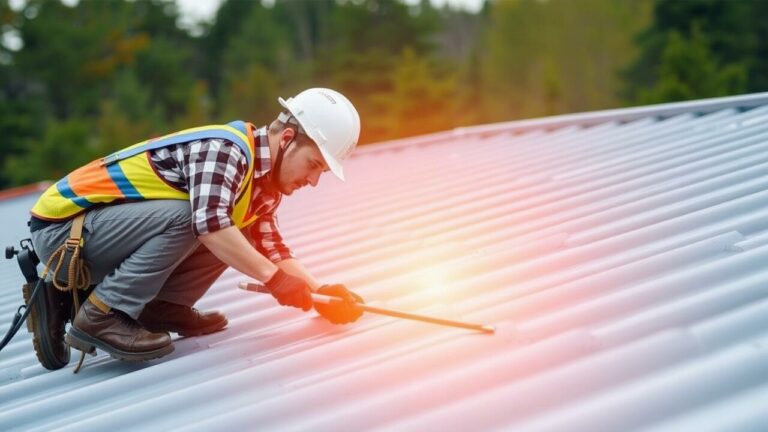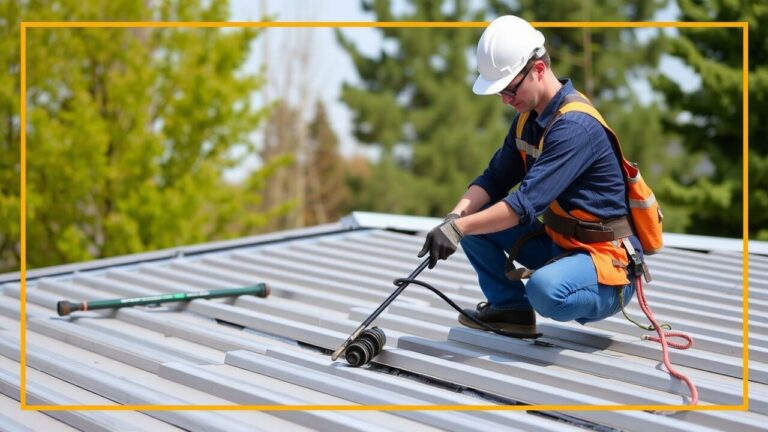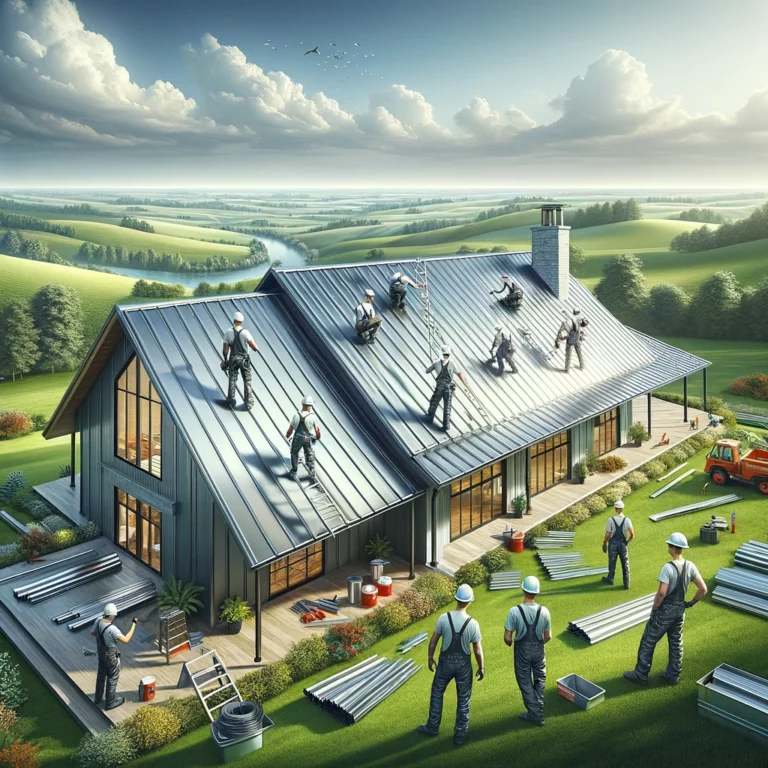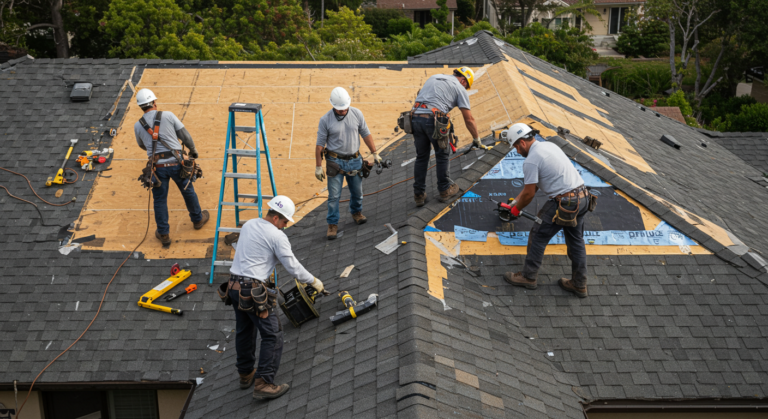Exploring the 4 Main Types of Metal Roofing
Copper roofing stands as a beacon of prestige in the vast landscape of metal roofing systems, celebrated for its unparalleled aesthetic charm and intrinsic resilience. Picture this: a vibrant reddish-brown that gracefully transforms over time into an eye-catching verdant hue—an evolution that captivates many. The magic of copper lies not just in its beauty but also in its remarkable ability to resist corrosion, endowing it with longevity that defies the ravages of harsh weather and relentless environmental challenges. This endurance means fewer replacements are necessary, making it an eco-friendly choice for both homes and businesses alike.
But wait! There’s more than just visual allure at play here; copper roofing boasts performance features that dazzle. It shines at reflecting heat—a boon for energy efficiency within buildings. Plus, its lightweight composition allows for nimble handling during installation, which can trim labor costs significantly. Oh, and let’s not overlook the fact that copper is naturally resistant to moss, mold, and bacteria—resulting in impressively low maintenance demands throughout the roof’s lifespan. With such an extraordinary blend of characteristics, it’s no wonder copper roofing emerges as a premier investment for those who crave reliability paired with undeniable style!
Characteristics and Durability of Copper
Ah, copper! A metal celebrated not just for its striking beauty but also for its remarkable endurance. Over time, this material undergoes a fascinating transformation, shifting from a dazzling sheen to an alluring verdigris—a mesmerizing green that whispers tales of age and resilience. This natural metamorphosis doesn’t merely elevate the visual allure; it weaves in a protective cloak that shields against the relentless forces of nature.
Imagine roofs adorned with this robust material braving fierce storms and blistering sun alike! Copper stands tall against corrosion and extreme weather fluctuations, making it an exceptional choice for myriad climates—one that promises performance stretching across decades like an old friend.
Its durability springs from both strength and surprising lightness—an intriguing dance between heftiness and grace. Unlike many alternatives that demand constant upkeep, copper requires little more than a nod now and then throughout its lengthy existence. And let’s not overlook its fire-resistant qualities—another feather in its cap when considering safety in our built environments.
The appeal? It’s irresistible! Whether gracing residential abodes or commercial giants, copper roofing beckons those who cherish longevity intertwined with design versatility—a marriage of form and function that’s hard to resist.
Zinc Roofing
Zinc roofing emerges as a fascinating blend of longevity and eco-friendliness, making it a compelling choice for contemporary construction endeavors. With an impressive lifespan often surpassing 50 years, zinc naturally evolves into a protective patina that wards off corrosion while boosting its resilience against the elements. Picture this: a roof that bravely endures torrential downpours and sweltering heat without showing signs of wear—such is the magic of zinc! Its inherent reflective qualities also play a role in energy conservation, helping to lower cooling expenses in those steamy locales.
But here’s where things get intricate—the installation process for zinc roofing demands meticulous planning and skilled execution to unlock its full potential. You can’t just throw any contractor at it; you need seasoned professionals who grasp the nuances tied to zinc’s unique behaviors, particularly how it expands and contracts with temperature shifts. Insulation and ventilation are not mere afterthoughts; they’re vital components in preserving the roof’s structural soundness while thwarting pesky moisture accumulation. Adhering to best practices during installation doesn’t just prolong the life of your roof—it elevates its visual charm too, showcasing that sleek, modern aesthetic only zinc can deliver!
Benefits of Using Zinc in Construction
Zinc stands out as a remarkably sustainable material, celebrated for its impressive longevity and recyclability. With a knack for resisting corrosion, it significantly slashes maintenance costs over the long haul—an appealing prospect indeed! The enchanting natural patina that graces zinc’s surface not only bolsters its durability but also enhances its aesthetic charm, allowing it to effortlessly harmonize with a multitude of architectural styles. This unique quality elevates the visual allure of structures while simultaneously providing an extra layer of defense against Mother Nature’s whims.
But wait! There’s more to zinc than meets the eye. Its physical attributes come hand in hand with practical perks when it comes to energy efficiency. Picture this: its reflective surface works wonders in moderating indoor temperatures, meaning you won’t have to crank up the heating or cooling systems excessively. Lower energy bills? Yes, please! And let’s not forget about that smaller carbon footprint—it’s like winning on multiple fronts! By weaving zinc into construction practices, one aligns seamlessly with eco-friendly building trends. It emerges as an enticing choice for both residential havens and bustling commercial spaces alike—a win-win scenario all around!
| Benefit | Description | Impact on Construction |
|---|---|---|
| Corrosion Resistance | Zinc’s ability to resist corrosion reduces maintenance needs and prolongs the lifespan of structures. | Decreased maintenance costs and extended service life of materials. |
| Aesthetic Appeal | The natural patina of zinc enhances visual appeal, allowing it to complement various architectural styles. | Improved aesthetics contribute to property value and appeal. |
| Energy Efficiency | Zinc’s reflective surface helps in temperature moderation, lowering the demand on HVAC systems. | Cost savings on energy bills and reduced carbon emissions. |
| Sustainability | Highly recyclable material, contributing to eco-friendly construction practices. | Alignment with green building standards and sustainable developments. |
Installation Process for Metal Roofing
Installing metal roofing isn’t just a routine task—it’s an intricate dance of precision and foresight that ensures the roof’s durability and effectiveness. The journey kicks off with a meticulous examination of the existing framework. Every nook and cranny is scrutinized for damages or repairs needed before any roofing work can commence. Once it’s confirmed that the roof deck stands firm and ready, a weather-resistant barrier gets laid down, acting as an additional shield against pesky moisture.
Then comes the choreography of cutting metal panels to size, aligning them in harmony with either architectural blueprints or manufacturer guidelines. Each piece must fit perfectly into its designated spot.
As we move forward, fastening these panels securely becomes paramount; they need to cling tenaciously to the structure beneath. It’s essential to wield only the recommended fasteners while adhering strictly to spacing protocols—neglecting this could lead to leaks or even worse, wind uplift disasters! Overlapping areas demand special care too; they require precise sealing techniques that bolster resilience against nature’s whims.
Once all panels stand proudly in place, it’s time for one final inspection: all edges and flashings must be meticulously checked for integrity. Only then can we declare this installation complete—a robust fortress atop your home!
Steps to Ensure Proper Installation
The art of proper installation is not just a task; it’s the cornerstone for unlocking the full potential and lifespan of metal roofing systems. Picture this: before you even think about laying down those shiny panels, there’s an urgent need to embark on a meticulous exploration of the existing roof structure. This isn’t merely a cursory glance—no! It’s an in-depth assessment, hunting for signs of damage, lurking rot, or any structural frailties that might threaten the integrity of your new investment. The condition of that roof deck? It’s crucial! An undamaged and well-supported foundation can dramatically bolster the durability of what comes next.
Now, once you’ve wrapped up that inspection with a fine-tooth comb’s precision, you must dive into the installation phase like it’s an intricate dance—one where following the manufacturer’s guidelines becomes your rhythm. Every measurement needs to be spot-on; every cut demands finesse to craft that elusive weather-tight seal we all crave. And let’s not forget about compatibility! The materials you choose for flashing, underlayment, and trim aren’t just random picks—they’re vital players in preventing leaks while boosting overall performance. Fasteners? Oh yes! Their placement should adhere strictly to specifications—ensuring they grip tightly enough to brave wind uplift forces and whatever Mother Nature throws their way. In this whirlwind process lies both challenge and reward—a symphony composed with care can lead to roofing triumphs beyond imagination!
Maintenance Tips for Metal Roofs
Regular inspections are absolutely vital for extending the life of metal roofs. Homeowners ought to plan roof assessments a minimum of twice annually—ideally in spring and fall, when nature’s transitions make it all too easy to overlook potential issues. During these crucial check-ups, keep an eye out for any signs of rust creeping in, seams that might be loosening their grip, or panels that have seen better days. Tackling those minor nuisances right away can stave off the beastly problems lurking just around the corner.
And let’s not forget about debris! Leaves and branches can become unwelcome guests on your rooftop, creating cozy spots for moisture to linger—definitely not what you want if you’re trying to avoid corrosion.
Now onto cleaning—a key piece of this maintenance puzzle! Grab a gentle pressure washer or even a soft broom to sweep away dirt and residue like they’re bad memories from last season. Steer clear of harsh chemicals; they’re like poison for your roof’s protective coat! Also, give some love to those gutters and downspouts—keep them free from clogs so water flows as it should. Regular upkeep doesn’t just keep your roof looking sharp; it significantly boosts its performance and lifespan too!
Long-Term Care Practices
Oh, the world of metal roofs! A realm where regular inspections become paramount in preserving their steadfastness. Homeowners, take heed: aim to conduct visual checks a minimum of twice a year—yes, twice! Zero in on those pesky spots that love to harbor debris: valleys and gutters are notorious culprits. In this diligent pursuit lies the opportunity to unveil lurking problems—loose panels? Corrosion? All might be hiding in plain sight!
But wait, there’s more! The flashing and seams—those unassuming yet critical junctures—demand your attention too; neglect here can spell leaks galore if left unchecked.
And let’s not overlook cleaning—a vital ritual for long-term roof health. Dirt, debris, even organic invaders can gradually gnaw away at both the structure’s integrity and its aesthetic charm. Fear not! A simple concoction of mild detergent mixed with water will work wonders to banish that unsightly buildup. Just steer clear of harsh chemicals—they’re like poison for your roof’s protective coating!
Finally, let’s talk drainage because what good is a magnificent roof without proper runoff? Clear those gutters diligently; they’re essential allies in extending your roof’s lifespan. With these steps combined—the watchful eye and gentle care—you’ll ensure your metal fortress stands strong against the elements for years to come!
- Regularly inspect your metal roof at least twice a year.
- Focus on trouble spots like valleys and gutters where debris can accumulate.
- Check flashing and seams for signs of wear or damage to prevent leaks.
- Clean your roof with a mild detergent solution to protect its surface.
- Avoid using harsh chemicals that can damage the roof’s protective coating.
- Ensure gutters are cleared to maintain proper drainage and prevent water damage.
- Document any findings during inspections to track changes over time.
Cost Considerations for Metal Roofing
The financial landscape of metal roofing is anything but straightforward, swirling with a myriad of factors that can dramatically shift the final numbers. Picture this: the type of metal alone—copper, glistening and pricey; zinc, not far behind—can send costs soaring compared to the more wallet-friendly aluminum or steel options. And then there’s installation complexity to consider; each twist and turn in your roof’s design adds layers (literally!) to labor costs, which can dance unpredictably based on local market trends.
But wait! It’s not just about those initial price tags slapping you across the face. Homeowners must dive deeper into the treasure trove of long-term value lurking beneath surface expenses. Metal roofing often stands as a bastion of durability and energy efficiency, paving pathways to savings that trickle down through reduced energy bills over time like a gentle stream after rain. Plus, these robust rooftops tend to outlast their traditional counterparts by years—maybe decades! So yes, while upfront costs might raise eyebrows higher than ever before, it’s crucial to take a step back and weigh both immediate figures against ongoing benefits for truly savvy decision-making when it comes to choosing your roofing destiny.
Factors Influencing Pricing in Different Regions
The pricing of metal roofing can swing wildly, shaped by a multitude of regional influences. Picture this: the ebb and flow of local demand for roofing materials, dancing to the rhythm of economic tides and population booms. In locales bustling with rapid development, prices often surge as competition heats up for both materials and skilled labor, creating a veritable marketplace frenzy. And let’s not forget geography – it wields its own power over shipping costs and the availability of certain metal types, casting ripples through pricing structures.
Then there’s climate—a formidable player in this game! Regions battered by extreme weather may find themselves needing specialized materials that come with a heftier price tag. Add to that the labyrinthine web of local building codes and regulations; these dictate not just what you use but how you install it—often elevating costs further due to compliance demands aimed at safety standards. Moreover, regional labor costs stir the pot too—with urban hubs typically boasting higher wage rates compared to their rural counterparts. The result? A complex tapestry where every thread weaves into the final cost, each factor intertwining in unexpected ways!
Conclusion
Metal roofing unfurls a tapestry of options, each weaving together aesthetic allure and functional prowess. Picture this: whether it’s the warm gleam of copper or the sleek resilience of zinc, every type brings its own treasure trove of benefits—enhancing not just durability but also the efficiency of structures in ways that traditional materials might envy. Homeowners and builders alike often revel in metal roofs’ remarkable longevity and their low-maintenance charm, making them an astute choice across diverse climates and architectural expressions.
But wait! Investing in metal roofing does more than merely elevate a property’s visual appeal; it whispers promises of energy savings that accumulate like quiet treasures over time. As awareness blossoms among homeowners about these advantages, it’s crucial to dive deep into the specific needs and conditions surrounding each project. An educated choice can unlock substantial long-term rewards, ensuring that your foray into metal roofing transforms into a bountiful investment—one marked by enduring durability and lasting value.
